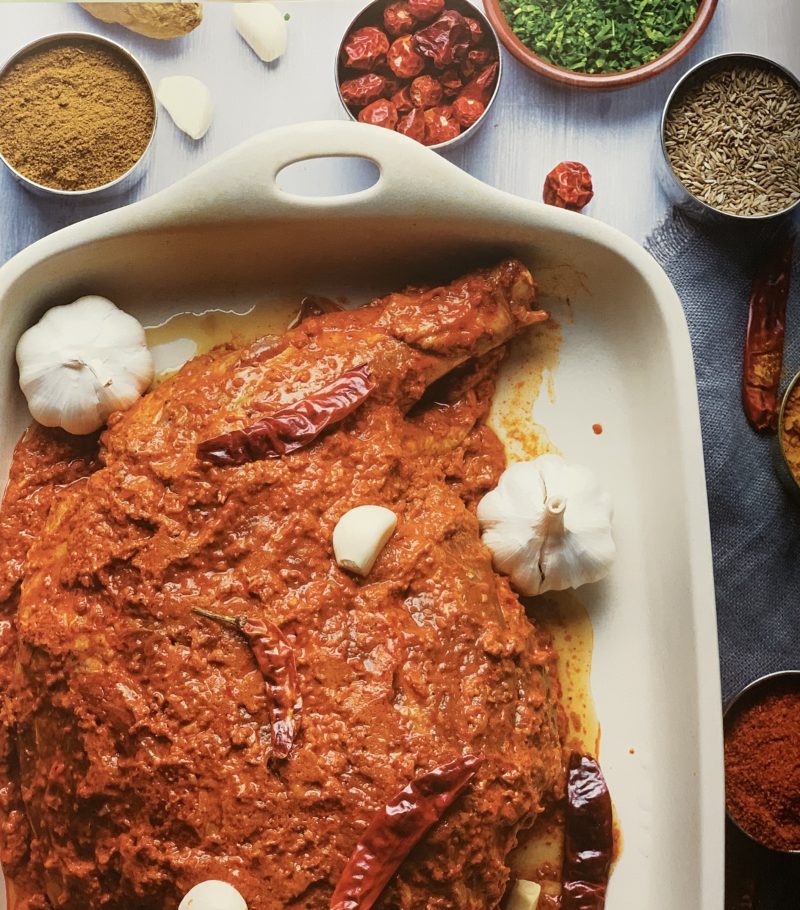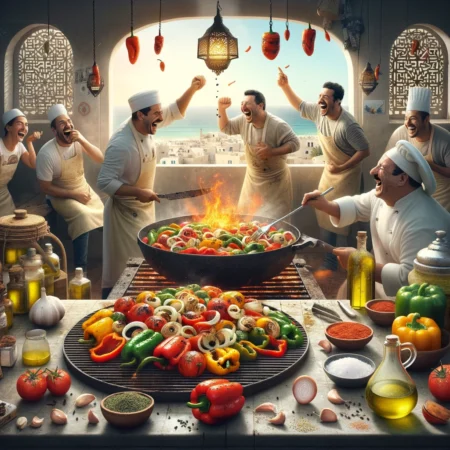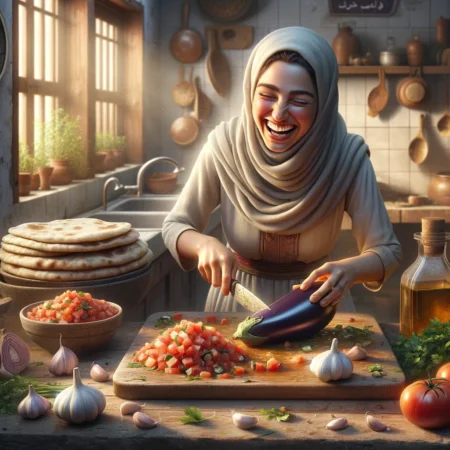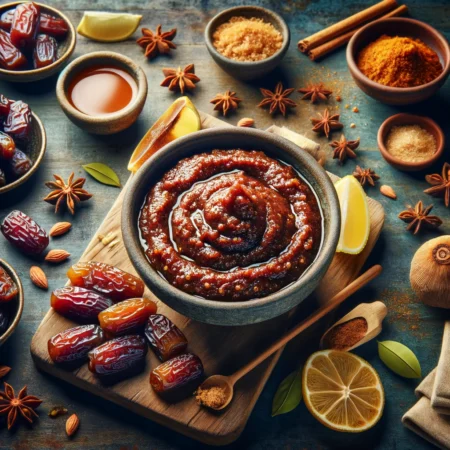Persian Raan: The Lamb of Legends
There’s a mesmerizing allure to Iran, a place where epic tales were born and legendary meals shared under the shadow of ancient, ornate domes. It was here, on the silk roads of Persia, that I stumbled upon the origins of a dish that proved that culinary history is often as intricate and textured as the nations that birth them. The Persian Raan, a majestic roasted leg of lamb marinated in rich spices, taught me that food is not just sustenance; it’s a story.
In the bustling markets of Tehran, amidst stalls lined with saffron and turquoise jewels, I met Firoz. A lamb merchant by profession, but a storyteller at heart. Sensing my foreign palate, he extended an invitation to his home, promising a meal I wouldn’t forget. How could I refuse?
As the evening adhan echoed through the city, I found myself seated cross-legged on Firoz’s ornate carpet. Before us lay the Raan, golden brown, redolent with fragrances of saffron, garlic, and a hint of something I couldn’t quite identify.
“Raan isn’t just a dish,” Firoz began, carving the lamb. “It’s a legacy.”
Tracing back to the time of Cyrus the Great, the origin of Raan is cloaked in the mystery of royal feasts and military triumphs. After a significant victory, it was customary for Persian kings to host grand feasts. Raan, with its majestic presence, was reserved for these occasions, a testament to the might of the empire.
Firoz’s great-grandmother, a brilliant cook in the Shah’s palace, was once tasked with creating a meal worthy of the greatest victory of them all – a united Persia. She decided to use the leg of the lamb, a symbol of strength and perseverance, marinated in the finest herbs from every corner of the empire. This was not just a dish but a map of the vast Persian terrain.
“The secret,” Firoz whispered leaning closer, “is in the marinade.”
That mystery ingredient I couldn’t pinpoint? It was dried rose petals, sourced from the gardens of Shiraz. An ingredient not just for its flavor, but its symbolism. Roses, revered in Persian literature and poetry, represented the soft, artistic side of the empire, a contrast to its military might. It was this balance of power and poetry that defined Persia, and by extension, the Raan.
I took a bite, and it was an explosion of flavors. The succulence of the lamb, the richness of the spices, and the subtle, fragrant undertones of rose – it was like tasting history, culture, and love, all in one mouthful.
Firoz continued to regale tales of his ancestors, of wars and peace, of feasts and famines. The Raan wasn’t just a meal; it was an experience, an ode to an era gone by.
As the night deepened and the embers of the fire grew dim, I realized that this was not just about the Raan. It was about how food can transcend its primary role, becoming an emblem of pride, history, and identity. The Persian Raan was not just lamb; it was the heart of a nation.
My journey in Iran was marked with many such discoveries, but the evening with Firoz, the taste of the Raan, and the tales that accompanied it, have been etched into my memory. A reminder that sometimes, the best way to understand a culture is not through its monuments or museums but through its flavors.
Persian Raan
Ingredients
- NZ Leg of Lamb approx 2-2.5 kgs
- 2-3 tbsp Ginger paste
- 2-3 tbsp Garlic paste
- 2-2.5 tbsp Salt
- 2 tbsp Red chilli powder
- 2 tbsp Kashmiri chilli powder
- 1 tsp Black pepper powder
- 1 large serving spoon of Oil
- 3 cups Yoghurt
- Baby potatoes, carrots
- 2-3 dried apricots (optional)
Directions
- Mix all marinade ingredients, with one cup of yoghurt initially. (you can add more to make it an easy consistency, like a grainy cake batter). Add Kashmiri chili powder for punch. It needs to be marinated 24 hrs before, no other tenderizer is required.
- Taste the marinade, should taste a bit high in salt and masala.
- Make deep piercing cuts with a sharp knife in the meat, stuff marinade in them, and cover the lamb in marinade. Rubbing it in well.
- Cover the dish with foil, leave in a cool place fr 24 hours. Let the salt and spices set in deep and well.
- Beat up the rest of the yogurt, and add to the dish. Mixing it all up, will bring the salt down, and soften it up, put some on the cuts, transfer everything to the dish you are going to roast in.
- Add baby potatoes, carrots, spring onions, and dried apricots around the lamb. Leave for a couple of hours.
- Heat oven to 250 degrees or hot setting.
- Add a cup or more of boiling hot water to the roasting dish. Cover tightly with foil
- Cook for 1.2 to about 1.5hours, check the lamb with a knife if it goes through without resistance. It may need a little more time depending on the weight of the lamb leg.
- Once done, remove from oven, keep covered, and let it sit for half an hour.
Different folks prefer their own source of lamb. New Zealand lamb has always been a favorite of ours. Ask the butcher to strip the top layer of fat, and to remove some chunks of fat from in between the meat. They should also make a cut in the joint, so you can bend the bone.
Serve with a garnish of choice as u, please. Rosemary and Lemon slices go very well. Carve on the table – serve with gravy from the dish, or bisto on the side!





